My motivation to participate full-time and high power in the WPX-CW was quite low this time. Currently I’m rather in “VHF mood” enjoying 6 & 4 m as well as waiting for more Sporadic E on 2 m during my holidays. 😉 So thinking about what to do on Friday the idea popped up to only participate QRP on 10 m and give my Elecraft KX3 a real workout. I’ve been owning it for quite a while now (SN #606) but besides a few test QSOs it hasn’t seen much use yet. My last serious QRP entry in the WPX-CW was back in 2008 when we had a fantastic series of Sporadic E openings across Europe which enabled me to work some 450 QSOs on 10 m using just a small FT-817 and a converted 3 ele CB band yagi. That was definitely fun back then!
Unfortunately condx where not very cooperative this weekend. Saturday was still okay with a number of spotty ES openings here and there that also allowed to get into propagation to the Far East so a good bunch of DX like XW, 9M2, E2, YB, etc. could be worked. Nevertheless it took almost exactly 10 hours until I had the first 100 QSOs in the log! Must be passion as real rates are certainly a different thing. 😉 Saturday evening provided a good ES opening into the Balkans that even enabled me to call CQ and get a few replies although still with low rates as most people seemed to have already migrated to the lower bands (or simply thought 10 m was dead). Late evening the band also opened via skewed path into the U.S. Although I could hear about a dozen different stations as far west as California (some up to 559!) only W1KM made it into the log, good ears! Five watts simply doesn’t cut it for scatter propagation modes … Caribbean was a bit easier to work but as everybody knows there are not many active stations … Band closed almost exactly around local midnight so went to bed with 210 QSOs under the belt.
Sunday morning had a nice ES opening into Scandinavia, i.e. OH and northern LA/SM, as well as into the Ukraine that lasted about 2 hours. Signals were great but unfortunately there was not much activity. 🙁 Thus only 40 QSOs added to the log. Around 9:30z E skip was right to get us into Japan! But besides hearing the big guns like JH6WHN, JS3CTQ and JH4UYB with up to 579 signals only JG1AVO made it into my log although he was only 529 himself. The “joy” of QRP … South America opened quite early but there were no new guys to be worked. The band then closed around 11:30z. 🙁
I always kept an eye on 10 m but spent some time on the other bands then, too. The German QRP assisted records for 160, 80, 40 & 20 m were not claimed yet so I thought it might be a good idea to do a few contacts there, too. 😉 Unfortunately I ran out of available club calls else I would have done a few QSOs on 15 m, too. Seems 15 m was the hot band this weekend! What was amazing was I could even run quite well on 40 m with just the 5 watts and a simple dipole! Could even hold my run frequency low in the band, i.e. around 7.029 MHz, for almost an hour before somebody sat right on top starting to CQ without even asking if the frequency was in use. 🙁 Well, the “joy” of QRP … although that also happens running low or high power …
As they say “appetite comes with eating” thus I really got into it Sunday evening and also enjoyed some good runs on 80 m. Of course being very low power it was all only within Europe but still fun so I even kept my butt in the chair until the end of the contest. 🙂
Doing so and keeping an eye on 10 m the band really opened up again after 21:45z, believe it or not. J38MM was booming in and easy to catch, likewise for P4, CE3 and ZF1A. Also heard a few U.S. stations again on sidescatter skewed path but see above, none logged due to not enough power for scatter modes. Finding no new stations I even put out a few CQs and low and behold the PJ2A skimmer copied me with up to 25 dB signals, wow! Unfortunately there is no big amateur population on Curacao and PJ2T was already on the lower bands. So only worked DM6V as my last 10 m QSO and they were really loud (579) on backscatter so that was rather easy. Band closed at midnight again.
Amazing to see those late night openings but I’m quite sure our big 6 ele OWA yagi @ 2 lambda height is “playing most of the music”. I do not remember ever experiencing such late openings from my times using (lower) dipoles, groundplanes or even the above mentioned 3 ele CB yagi (which was just a tad higher than half a wavelength).
After all I can certainly be happy with my 273 QSOs on 10 m. Best German high power score I’ve seen so far is from Frank, DL1REM, who was really pushing hard as DAØCA but “only” made twice as many contacts. The current German SOSB(A)10QRP record set by Walter, DJ6QT, last year was broken 😎 although I would have hoped for a result a little higher. Also got some nice totals for the other bands and open records even if I had the feeling it was just a “small extracurricular activity”. 😉 Might be a nice idea to go for a serious QRP allband entry next year. Quite sure > 1.200 QSOs should be possible if conditions are not much worse. 😉
Finally here are the single results:
DH8BQA SOSB(A)10 QRP 272 QSOs 230 pfx 112.240 pts
DL0PCK (DH8BQA) SOSB(A)20 QRP 50 QSOs 43 pfx 3.784 pts
DM0Y (DH8BQA) SOSB(A)40 QRP 323 QSOs 239 pfx 162.520 pts
DF0TEC (DH8BQA) SOSB(A)80 QRP 202 QSOs 168 pfx 63.840 pts
DF0UM (DH8BQA) SOSB(A)160QRP 28 QSOs 25 pfx 1.350 pts
------------------------------------------------------------------
Total 875 QSOs 343.734 pts
==================================================================
So what about my KX3 experience then? I’m of the opinion the radio is a bit overrated. Although people think it is even better than a K3 just because it ranks higher in the Sherwood list than the K3 the K3 runs circles around it! The KX3 being a direct conversion radio has a problem with audible “IF/sideband” images. Elecraft developed a procedure to null those images that works quite well and suppresses the images around 60-70 dB. I had done the procedure about a year ago but wondered why I received images of stations even being only s7. Luckily I had my XG3 with me so redid the nulling procedure Saturday morning. It was off by 1-2 steps from the last calibration! Situation was much better then but even now I could hear images from stations being stronger than about 599+10 (and there are quite a number with Sporadic E!). The images are just audible and you get used to it but still it is a small drawback compared to other radios. It was only a bigger problem on 10 m here as the band is really quiet and even using the internal 20 dB preamp band noise is not even getting the s-meter to flicker. 😉 No problem on the other bands as band noise or other CQing stations are usually covering up the weak images there. Also a problem just on 10 m was VFO noise, i.e. when spinning the VFO you hear some extra noise. Even after doing the roofing filter mod as described by Elecraft it’s still quite prominent (also on a friend’s KX3 who does not even have the roofing filter fitted!). Elecraft also has a VFO noise reduction routine built into the KX3 to overcome that issue but it’s really not useful as it results in strange DSP artifacts when tuning around strong signals! So I left it switched off and cured the VFO noise issue by using the 8 kHz “IF” shift.
I also like to listen to speaker audio so ran the whole contest with the internal speaker. Well, describing it as “crappy” will certainly hit the nail on it’s head but that is a known problem with the KX3 and Elecraft never intended it for such use as they say and ask people to use an external speaker or phones. Well, my expectation is if there’s a speaker built in it should also be usable! Otherwise leave it out. 😉
That might all sound bad but in fact these are rather minor issues (although they can be annoying). The KX3 managed the strong signals on the low bands better than I would have expected and still runs circles around other rigs. Years ago I owned an IC-706MkIIG and that being a crappy radio in general even had more problems with audible “images” or a kind of signal breakthrough on strong signals although not being a DC receiver. Also my good old trusty FT-817 which is better than some “big radios” is rather worse than the KX3 concerning strong signal handling. But you don’t hear any images on that one. 😉
Would I recommend it? Depends on what you want to use it for. It’s a great radio for portable QRP ops and will surely do a great job also with the KXPA100 amp connected. I think it’s also a nice radio for general (home station) use and does quite well in crowded band conditions like contests. For average Joe it will do great but don’t expect it to be a killer radio when you connect it to big antennas. Having serious contesting in mind I would pick the K3 over the KX3 in a heartbeat! Besides the K3 performing a bit better it is also about connectivity, i.e. cabling in computer audio on separate jacks, no need to change any cables, a.s.o. The K3 is *much* more convenient in that respect. On the other hand picking a KX3 and connecting it to a high gain amp like the new SPE 1.3k-FA will give you a great small and lightweight kilowatt expedition package. 😎
 Well, I finally defeated my “nemesis”! 😀
Well, I finally defeated my “nemesis”! 😀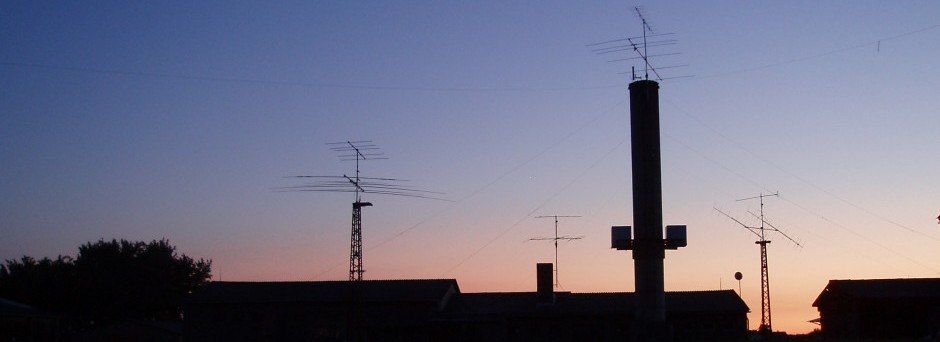
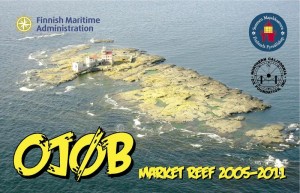
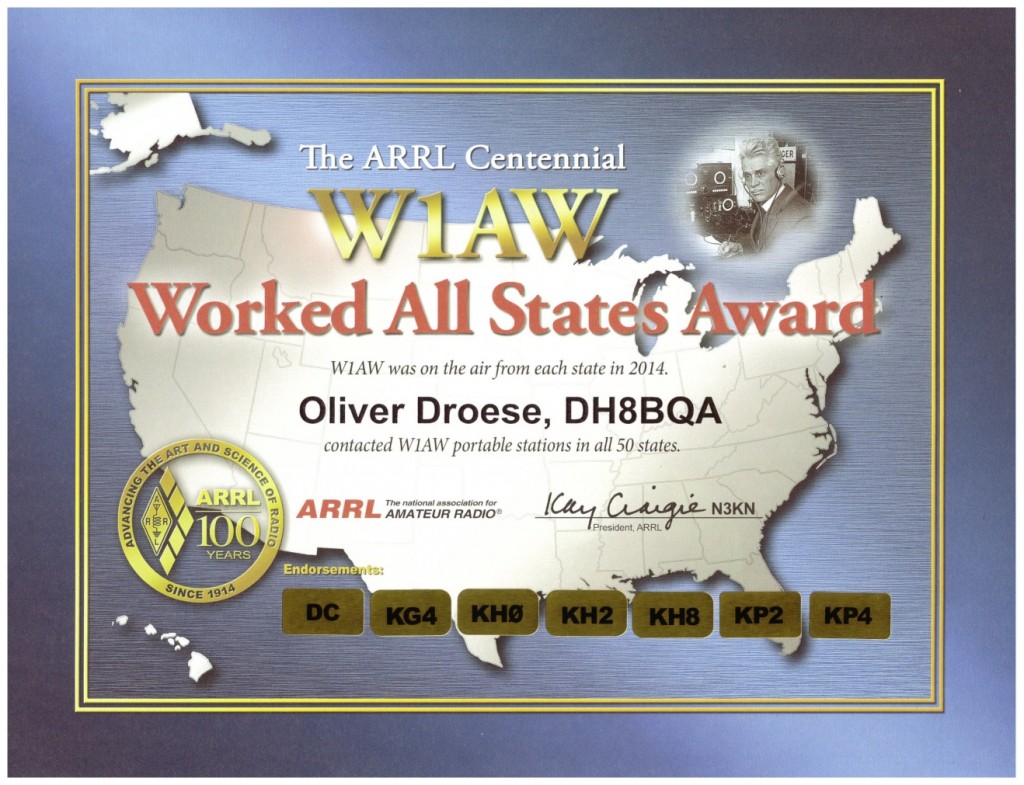
 Before closing down the station tonight I switched down to 6 m again and was astonished to hear SØ1WS working a massive pileup. I missed to work him last summer when the other locals caught him so tried my luck in the pileup today. Unfortunately not much luck with him being only 55 max. He vanished into the noise a few times but suddenly rose to a 59 signal for a few seconds only. That was my chance … and well, I used it and grabbed him for another new one on 6 m. Seems a much better start into the season than last year already … 😎 Also unpacked and installed my Elecraft KX3 today. It’s been a while since I had last used it. Already thinking about using it during WPX-CW this weekend. Haven’t done much QRP ops lately. 😉
Before closing down the station tonight I switched down to 6 m again and was astonished to hear SØ1WS working a massive pileup. I missed to work him last summer when the other locals caught him so tried my luck in the pileup today. Unfortunately not much luck with him being only 55 max. He vanished into the noise a few times but suddenly rose to a 59 signal for a few seconds only. That was my chance … and well, I used it and grabbed him for another new one on 6 m. Seems a much better start into the season than last year already … 😎 Also unpacked and installed my Elecraft KX3 today. It’s been a while since I had last used it. Already thinking about using it during WPX-CW this weekend. Haven’t done much QRP ops lately. 😉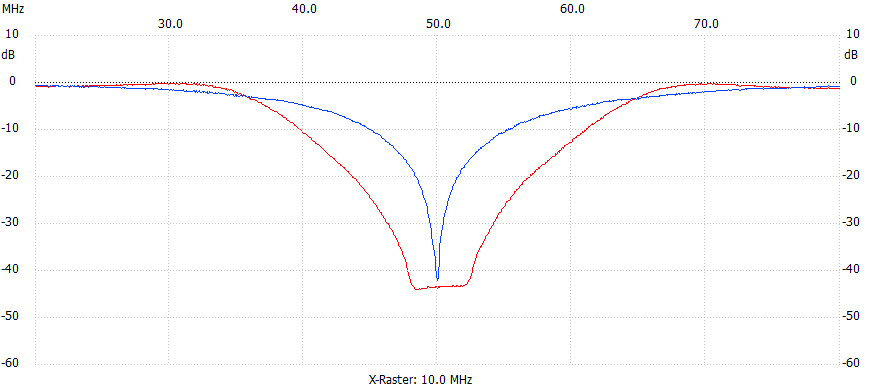 The graph nicely shows what happens. The blue line is just one quarter-wave open stub trimmed to 50.060 MHz. To even higher the attenuation a bit one should use additional quarter-wave length’ of coax for the connections on the to be notched band, i.e. 70 MHz antenna port – quarter-wave for 50 MHz – connection point of the quarter-wave open stub for 50 MHz – another quarter-wave length for 50 MHz to the 70 MHz transceiver. The quarter-wave sections will transform the already high impedance of the open quarter-wave stub to even higher impedances at the antenna/transceiver ports. Thus we will gain another few dB’s of attenuation. Will try to draw a picture for even easier understanding if a bit time during holidays. 😉
The graph nicely shows what happens. The blue line is just one quarter-wave open stub trimmed to 50.060 MHz. To even higher the attenuation a bit one should use additional quarter-wave length’ of coax for the connections on the to be notched band, i.e. 70 MHz antenna port – quarter-wave for 50 MHz – connection point of the quarter-wave open stub for 50 MHz – another quarter-wave length for 50 MHz to the 70 MHz transceiver. The quarter-wave sections will transform the already high impedance of the open quarter-wave stub to even higher impedances at the antenna/transceiver ports. Thus we will gain another few dB’s of attenuation. Will try to draw a picture for even easier understanding if a bit time during holidays. 😉
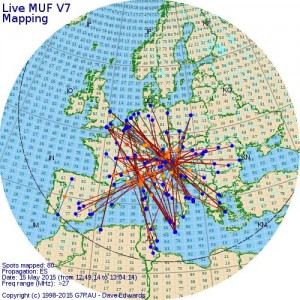


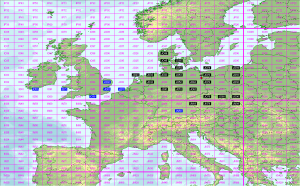

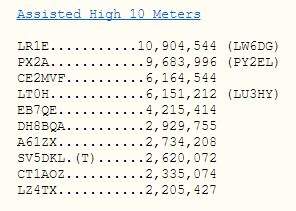 Raw scores for this year’s
Raw scores for this year’s